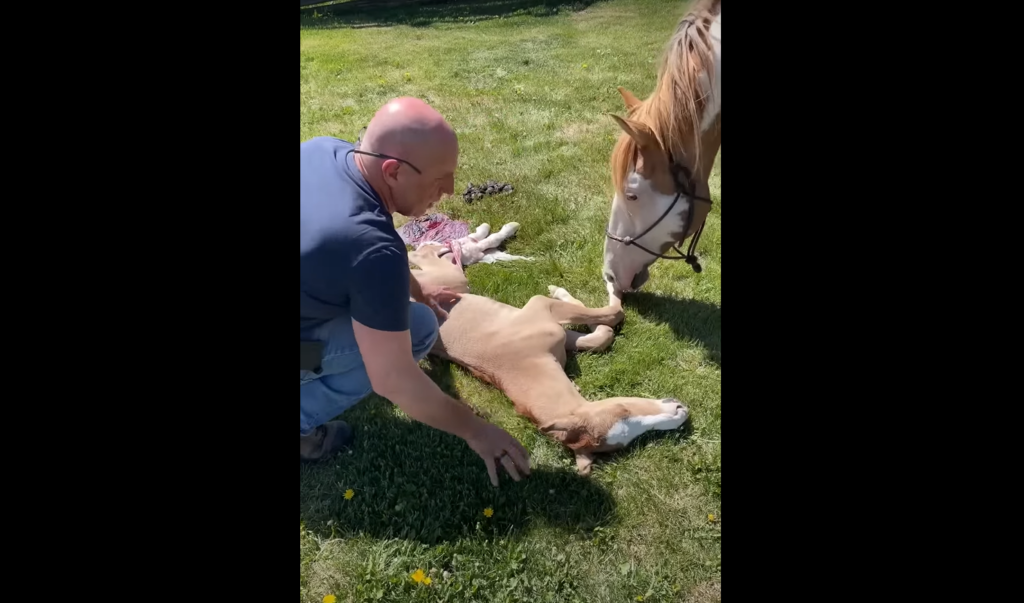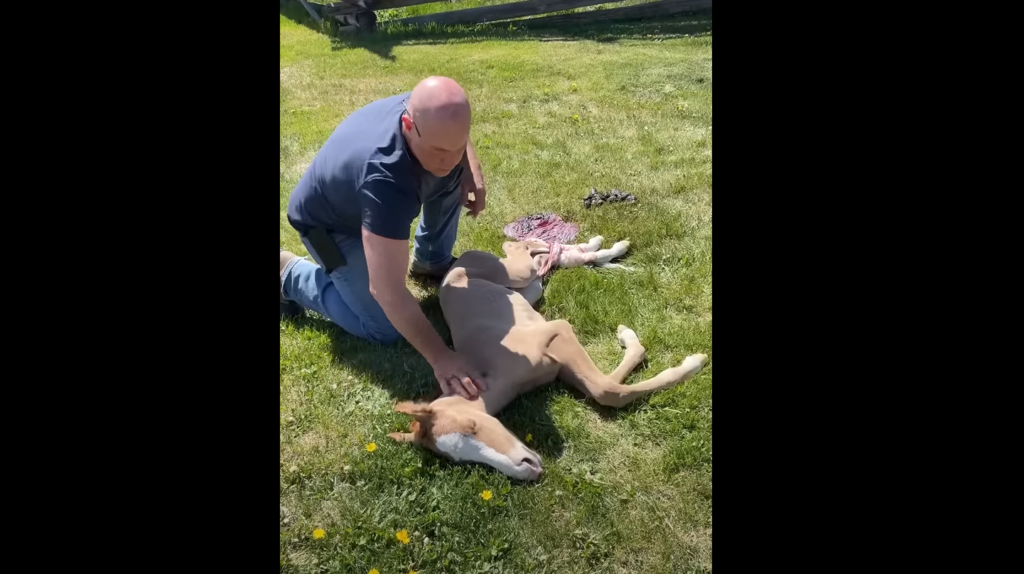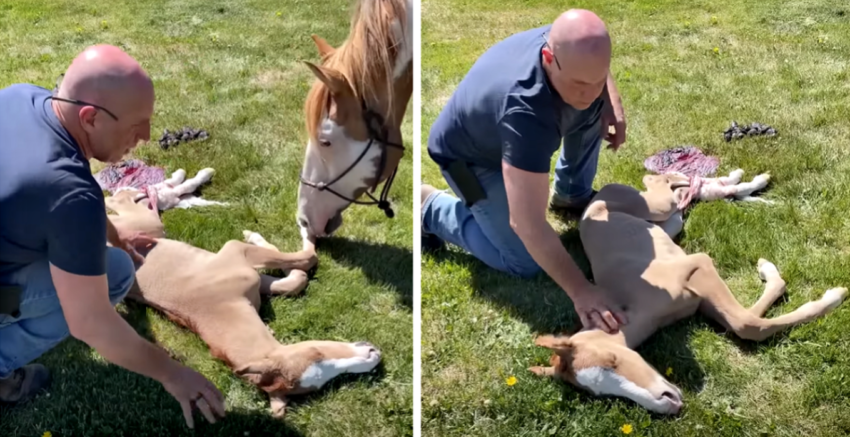The process of horse birth, also known as foaling, typically lasts between 20 and 30 minutes. Prior to giving birth, the mare will exhibit certain behaviors such as restlessness, sweating, and increased urination. These behaviors may last for several hours or even days before the actual birth occurs. As the mare goes into labor, her water will break, and the first stage of labor begins. During this stage, the mare may pace, lie down and get up, or roll on her back. This stage typically lasts between 30 minutes to four hours and ends with the mare’s cervix dilating fully.

The second stage of labor begins when the foal enters the birth canal. The mare will lie down and begin pushing. The foal’s front legs will appear first, followed by its head and shoulders. Once the foal’s head is out, the mare will rest for a few minutes before continuing to push the rest of the foal’s body out. After the foal is born, the mare will typically break the amniotic sac and start licking the foal to help stimulate its breathing and circulation. The foal will attempt to stand within an hour after birth, and it usually takes about two hours for the foal to fully stand and nurse for the first time.

After the foal is born, it is important to monitor both the mare and foal closely. The mare should pass the placenta within an hour after birth, and both the mare and foal should receive veterinary care to ensure their health and well-being. With proper care and monitoring, the mare and foal should bond quickly and begin a healthy and happy life together. In the video below, we will show you a unique after-birth case. The mare in the video gave birth to a lovely foal but he went lifeless after getting born. Actually, the mare that birthed this little foal almost passed away a week before actual birth.

In that case, when the mare started giving birth, the owner decided to intervene into the process by pulling the foal out faster than it should be just so he could save the life of the mare and foal. Since the foal came out faster, he could not response. However, after some simulations from the owner, the little foal started responding and now both the mare and the foal are doing great. Please have a look at the video below for more, let us know your comment, and do not forget to spread out the video on social media with your loved ones.
